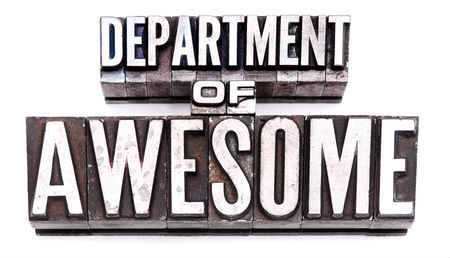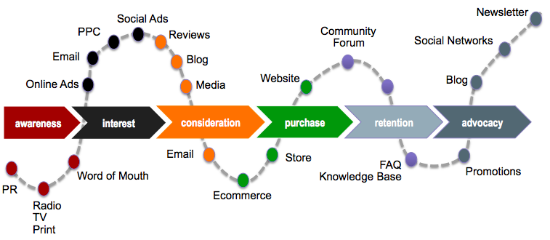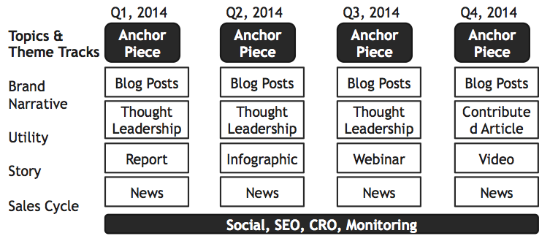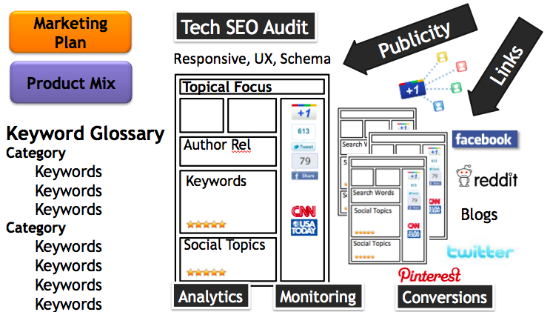
Every marketer that delves into social media is doing so in hopes of achieving success. Of course, the reality of the situation is that some marketers are going to end up failing; and a great way to avoid becoming just another statistic is to create and achieve reachable goals one at a time.
Biting off more than you can chew, so to speak, is often the cause of failure.
Marketers setting their hopes too high and then spending too much time and money in the wrong areas is a recipe for disaster. Below, you will read some tips to implement in your social campaign pertaining to brand achievement.
10 Tips For Creating And Reaching Goals In Social Media
1. Create An Outline Of Obtainable Goals
What types of goals do you have in mind as a social marketer? The first thing you want to do is ensure that your goals are realistic. Instead of having a goal like cornering the market and outshining the competition, start with the goal of competing with a few thousand fans, increasing your sales by 10%, building more overall brand awareness, etc.
Social media goals should remain realistic.
Not every kid playing hoops is going to reach the NBA, and having that sort of goal, while there’s nothing wrong with it, is rather lofty and likely to fail. On the other hand, there are many milestones along the way that are much easier to achieve and all of which stand out as successes.
2. Understand Your Audience
When you outline goals such as increasing your fan base and your brand awareness, the next step is understanding the type of audience you’re delivering material to. For instance, a brand that deals in the tech industry might not make a splash if the material they’re releasing deals with everyday news and gossip.
Understand what your audience expects from you.
As it stands, no one understands your brand and your mission better than you. Relay this message in your material and deliver it to the type of person most likely to respond positively to the message. Niche marketing is smart marketing.
3. Take Part In The Conversation
No social media marketer reaches success without actually focusing on the social aspect of the genre. In order to be successful in reaching the goals you have outlined, you need to participate in the social experience. Whether on Facebook, Twitter,Google+ or any other site, be a social brand that seeks to treat people well.
Respond to people, show fans that you appreciate them in your material, and engage with people by Liking, sharing and commenting on their material at times. Engagement can’t be a one-way street if you’re hoping to be successful.
4. Choose The Right Platforms
Part of reaching your goals has to do with the social media platforms you choose to participate on. Although there are some popular options to choose from that aren’t going anywhere anytime soon, many social networks come and go like the seasons.
Choosing steady networks is a huge plus.
Facebook, Twitter, Instagram, and even a video site like YouTube are all great options. With a site like Facebook, for example, you get a full range of customizable features, a slew of ad options and different ad management apps to choose from, and your content distribution can be streamlined and focused on a direct target without fear of an audience dwindling or a site collapsing.
5. Develop A Strategy For Content
The next step in this process is to actually devise a strategy for releasing your content. This strategy can be broken down into sections to help you better understand it:
- The Target Market
- The Quality Of The Content
- The Release Schedule
Refer back to the previous tip about understanding your market. You want to target your material—your ads and posts—directly to an audience that is more likely to engage with you.
Secondly, you want to ensure high-quality content that actually aims to solve real problems within your niche. Don’t present generic content for the sake of releasing something.
Thirdly, you want to focus on a release schedule. Find out when the bulk of your audience is online and deliver content at times they’re most likely to see and engage with it.
6. Develop A Schedule
Following up on the previous tip, let’s speak in a little bit of detail about developing a posting schedule. Since you may have more than one active platform, you need to understand how the traffic flow works on each one.
Your Facebook audience might be at its peak when your Twitter audience is fairly slow, leaving you with a lot of work to do if you’re trying to keep up with your posting times. This is why you should implement a program to help you release content on a schedule. You can simply put the content into the management system and set the times for release. This decreases your workload while helping you to get the most engagement.
(See related post: The Secret Of Timing In Social Marketing)
7. Keep Up With Trends
“Quality” is often dictated by the viewer, not the poster. In other words, something that’s popular may not be something that actually earns points for its craftsmanship or forethought. This is often the case with hashtags, and also with memes, polls and other material that’s frequently shared. Part of your social media marketing campaign should involve keeping up with these trends and playing to the crowd.
Developing and using hashtags, for instance, gives you a great opportunity to track your content, to see who’s saying what about your brand, and to reach a much larger audience. Sharing other material also puts you smack-dab in the middle of the social experience, allowing you to play to that proverbial crowd and to generate more of a buzz.
8. Ask For Engagement
The call to action has long been one of the best ways any Internet marketer induces follow-through after the material is released. Relying on people to click-through on something has never been a marketing principle; instead, inserting a variety of actionable calls—“Click here”, “Want to know more?” and “Act now while supplies last”among others—has always been a preferred way to coax the traffic in the right direction.
You can use a call to action in the material you’re releasing to increase your odds of engagement. Actually, asking for engagement, such as comments, Likes and shares, can have a very positive effect on your marketing.
9. Be A Generous Brand
Social media is unique in that you have so much control over the material you’re releasing to the public. It’s also unique in terms of how many options you have available to you for marketing your material. Take a site like Facebook for example. You can operate a contest from the site and develop new lists of thousands of members.
For example: Creating a contest on Facebook, where you’re offering a monetary prize, can create a lot of buzz and traffic. Supplementing your marketing efforts by using Twitter, Instagram and other social networks, you can draw huge exposure and end up with a lot of interested subscribers.
Getting 100 new customers out of 1,000 new leads more than pays for any prize you’re giving away; and look at it this way: The bigger and better the prize, the more people who join to win it. The end result could be a huge windfall.
10. Monitor Your Results
Last up on the list, you want to carefully monitor the results of any content you release. You can check your analytics on a site like Facebook, or you can get a third-party monitoring system to help you make sense of everything.
Keeping up with your results helps you to achieve your goals a lot quicker and without having to trash a campaign to start from square one. You can see what you’re doing correctly and incorrectly, and you can subsequently double-down on what’s working to increase your odds of success.
Start with goals you can actually reach.
Overall, the best way to achieve your goals is to start out with goals you can actually reach. Once you approach social media marketing realistically, you will find that the tools are available to help you achieve success as long as you’re willing to follow a formula.














 Social media is a rapidly changing industry. You can be a skilled social media marketer or an enthusiastic newbie that has social in their blood, but keeping up with the changes is highly important for your work.
Social media is a rapidly changing industry. You can be a skilled social media marketer or an enthusiastic newbie that has social in their blood, but keeping up with the changes is highly important for your work.